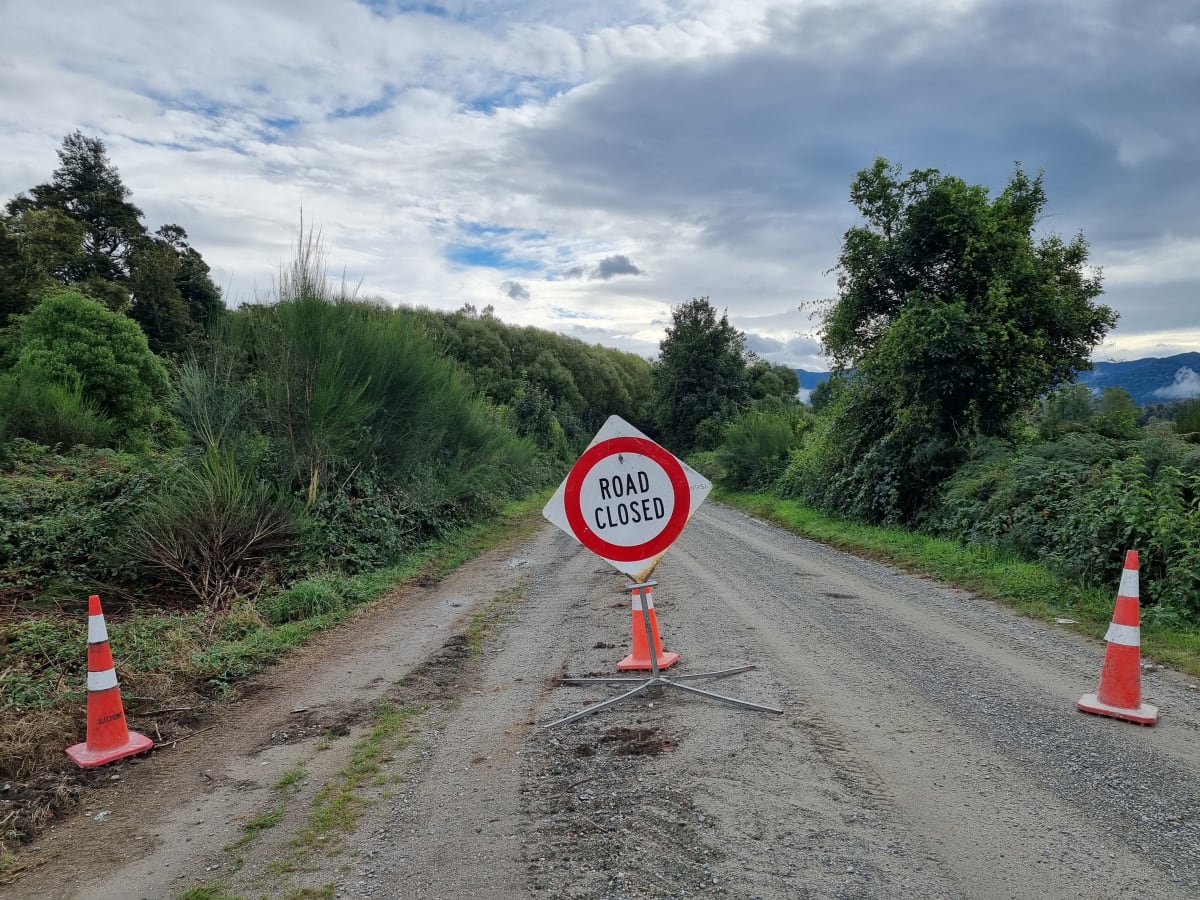
Short-term work to save the West Coast town from increasingly frequent floods is about to start but a $10 million “big fix” remains some way off
Flood-weary Westport residents can expect to see efforts start in autumn to protect them from the rampaging Buller River.
The West Coast Regional Council has approved emergency rock work to shore up river banks near the town's O'Conor Memorial rest home, and upstream at Organs Island where the Buller overflows into the Orowaiti River and floods the town.
Both sites have been badly scoured by recent floods, including the dramatic event last July that forced mass evacuations and left hundreds of homes under water.
Buller Mayor Jamie Cleine says it could be next year before a design and consents are finalised for the big fix: a $10 million flood wall and stop bank system to cope with a 100-year flood.
But the diggers will be on the job in a matter of weeks to strengthen the town's defences at the two weak spots.
Relief
Cleine says that may bring some comfort to a town on edge since more flooding in February shattered homeowners' already-frayed nerves.
“Realistically, it will take months to prepare for the main project, but now we can get on with the ‘no regrets' stuff — the bits that will have to be done whatever the final design is.”
The mood of the town has been tense and at times fractious, which is understandable, Cleine says.

“People are dealing with the physical stress of evacuation. At the same time they're having to deal with the biggest financial transactions of their lives — insurance payouts, organising repairs and coping with all the delays.”
More than 50 Westport families made homeless by the July 2021 flood are still holed up in motels, with only about eight temporary homes moved into the town so far.
Another 22 houses, all funded by the Government's temporary accommodation service, are planned for a council site on Alma Rd south of the town by October.
“There's been of lot of angst in town about getting things done quickly,” Cleine says.
Ongoing hazard
Adding to homeowners' anxieties, hazard maps released in February for the West Coast's new combined district plan show much of Westport captured in “severe flood hazard” zoning.
Greymouth, in contrast — protected by flood walls built after two disastrous deluges in 1988 — escapes the label.
To an outsider, Westport's hazard tag might seem entirely reasonable given the events of the past 12 months.
But it's been described as “catastrophic” by some submitters to the plan, who say the “stigma” attached to property in the severe flood zone will see values plummet, make it harder to insure homes and imperil mortgages.
Crude instrument
Local surveyor Laura Coll McLaughlin, who is Buller's representative on the plan's working group, agrees the hazard maps could have a damaging effect on individual properties.
For that reason she voted against releasing them, she says.
“The maps are a very crude instrument. They capture some houses that have never been flooded and they exclude others that have.”
The risk of inundation will fall once Westport's flood walls are built and the severe hazard zoning should disappear, Coll McLaughlin says.
“But it's very difficult to remove those maps once a plan is operative. You have to go through a formal plan change and that's complicated and costly.”

The manager of the Coast’s Te Tai o Poutini Plan project, Jo Armstrong, says there may be other ways of dealing with the perceived problem.
“We have still to discuss this, but we could write a rule that says the overlays have no effect once the flood walls are built,” she says.
And building could still go ahead in the flood zone, she says, as long as the risk is mitigated by, for instance, raising a house above the highest-known flood level.
Community on edge
Tension over the issue erupted at a recent public drop-in session over a Buller District Council proposal to confirm a blanket rule on foundation heights.
Local man Frank Dooley — representing builders — was banned from the council chambers by trespass order after a confrontation with Deputy Mayor Sharon Roche.
Cleine says the incident was unpleasant, but reflects the level of stress in the town.
The council has since scrapped the policy and will leave it to the Ministry of Business, Innovation and Employment (MBIE) to be the final arbiter of risk for builders in the flood zone, he says.
One Westport homeowner who has faced the flood fear and raised her house is artist Ruth Vaega.
The Orowaiti riverside home she shares with her husband, Peter Graham, was flooded in Cyclone Fehi in 2018 and again last July.
Hair-raising
After Fehi, the couple decided to have their home lifted above flood level.
“The water came up so fast it was terrifying. We had had my little granddaughter with us and we decamped to a caravan on the only high ground and were stuck there until the water went down.”
They returned to a scene of destruction and heartbreak: artworks, records and precious belongings wrecked by a massive sea surge and flooding river.
“It cost us about $50,000 to lift the house — I guess it would be twice that now. But insurance paid for it, and it's been worth it. These last two floods, the water reached our outbuildings but the home stayed dry.”

The New Zealand Insurance Council says that's the type of action homeowners and communities are increasingly being faced with as climate change ramps up.
And despite the fears of some Westport residents, insurance is still available in the town, although some homeowners might have had to “shop around”, the council says.
Millions claimed
Insurers have paid out more than $55 million for damage to homes from the July flood and $13.5 million for contents, with 85 percent of claims settled.
The council says the new hazard maps alone will not determine whether an insurer will renew a homeowner’s cover. Rather, decisions will be based on what's being done by property owners and councils to mitigate risk.
But chief executive Tim Grafton says individual householders can’t be expected to build their own flood defences.
“Community-led action involving local and central government is needed to reduce flood risk and make infrastructure more resilient.
“This is the only long-term solution to reduce further economic, social and environmental disruption as we look to a future where extreme weather events are already becoming both more frequent and severe.”
Ratepayers footing bill
The West Coast Regional Council has budgeted more $10 million for the Westport flood defences, not counting the unforeseen emergency work it recently approved.
The money will come out of ratepayers' pockets over time.

But Cleine estimates the cost of a comprehensive package to protect Buller — and fix the damage to roads and bridges across the district from the last two floods — could be as high as $60 million.
“Buller has the potential to be a test case for a change to the normal 60:40 subsidy rate for post-disaster government funding. There’s no way our ratepayers can afford 40 percent of $60 million.”
A steering committee set up by MBIE is working on a business case to go to Cabinet by June, and it will have to recognise the growing threat to Buller posed by climate change, Cleine says.
“There's no pressure to move the town and head for the hills or anything right now, but we'll need to make changes to building rules and zoning so people can choose to relocate overtime.
“We think we have the ear of Government ministers — they want to champion us. But they have made it clear the answer can't just be about flood walls. We can't just go on throwing rocks at this thing.”
*Made with the support of the Public Interest Journalism Fund*








